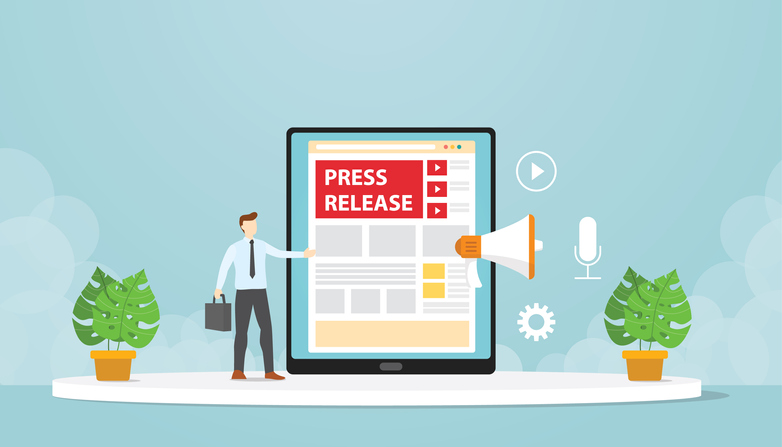Main Tips for Writing a Press Release
K.I.S.S.
Keep it super simple. That’s a golden rule for writing press releases. Don’t use complicated language. Make sure the message you are trying to convey can be easily understood by anybody reading the press release.
Be Concise
Journalists work on tight schedules. They don’t have time to read every long-winded document in their inbox. Keeping your press release short increases the chances of it being looked at by a busy journalist with a time crunch.
Focus on Facts
A press release is not the place for subjective opinions. Since your audience is journalists, your press release should contain only the facts. Leave the editorializing of the story to publications that pick up your press release.
Use Quotes
If prominent leaders in your organization offer a quote, always include it in the press release’s body. News outlets love carrying quotes from notable figures, so this is a good way to increase the likelihood of getting coverage.
Be Newsworthy
Only newsworthy developments deserve a press release. Constantly spamming the media with irrelevant information is a good way to get your company’s mail sent to the recipient’s spam folders.
Situations Requiring a Press Release
No publication will care about your office getting a new coffee machine. On the other hand, a new CEO taking the helm is definitely newsworthy. Let’s look at some events that warrant a press release.
Product Launches
Consumers won’t buy your latest product if they haven’t heard of it. Identify which news outlets cover products similar to yours and send out a product launch press release. When writing a press release for a product, include details like:
The product’s USP
Pricing
Where to buy the product
Store Openings
When opening a store in a new location, it’s always worthwhile to send a press release to local news outlets. It raises curiosity and will help you draw customers from the get-go. Invite reporters to cover the event by including details like:
Who will be involved in the opening ceremony
Opening date and location of the new store
The products or services that will be available at the store
New Partnerships
Partnerships, mergers, or acquisitions are considered newsworthy, so you should immediately provide the media with all relevant information. This prevents speculation or inaccurate reporting. Make sure to mention:
Details of the partnership
How this development came about
Its implications for your company’s future
Major Events
If your company is hosting an event or participating in a convention, you’ll want to announce it with a press release. An event-related press release should include details like:
Who the event is for
What the event is about
How to attend
Winning An Award
Winning awards signifies to the media and public that your company is on the rise. Share details about:
Company News
Other major developments in your organization that require a press release include:
The Process of Press Release Writing
Writing a catchy press release is a multi-step process. It generally follows the sequence outlined below.
1. Researching
Your press release must offer all the information needed for a news outlet to pick up the story. That means conducting research and connecting with various departments in the company to ensure no important details are left out.
2. Outlining
Once you have all the necessary information, you must figure out how to structure it. Like a news article, your press release should always follow the “5 Ws and 1 H” rule (Who, What, When, Where, Why, and How).
3. Writing
Within the parameters of the standard press release template, you can use your writing skills to make yours stand out. You must know how to write an engaging press release headline, compelling reasons to cover the story, and an informative company boilerplate.
4. Editing
Take the time to proofread your press release for any grammatical errors, typos, or inconsistencies. Ensure it is well-structured and flows logically.
Structure of the Press Release
All press releases follow a similar structure. To write a good press release template, ensure you include the following elements:
Headline: Grab the attention of readers and journalists with a concise and compelling headline summarizing the most important aspect of your news.
Dateline: Add the date and place of composition or issue; typically, the name of the city in capital letters, followed by the state or territory it’s located in.
Introduction: The first paragraph should be engaging while concisely summarizing the entire press release. Here’s where you answer the "who, what, where, when, why, and how" questions clearly and concisely.
Body: Expand on the introduction. Add relevant details, quotes, and supporting information. Remember to prioritize the most important information first and include any pertinent facts or statistics, preferably in bullet points.
Contact Information: Include a contact person's name, email address, and phone number for journalists to easily reach out for further information or interviews.
Boilerplate: Add a short paragraph about your company or organization at the end of the press release. It must provide essential background information about your company, including its mission and any key accomplishments.
In addition, press releases may also contain images and, in the case of digital press releases, videos.

